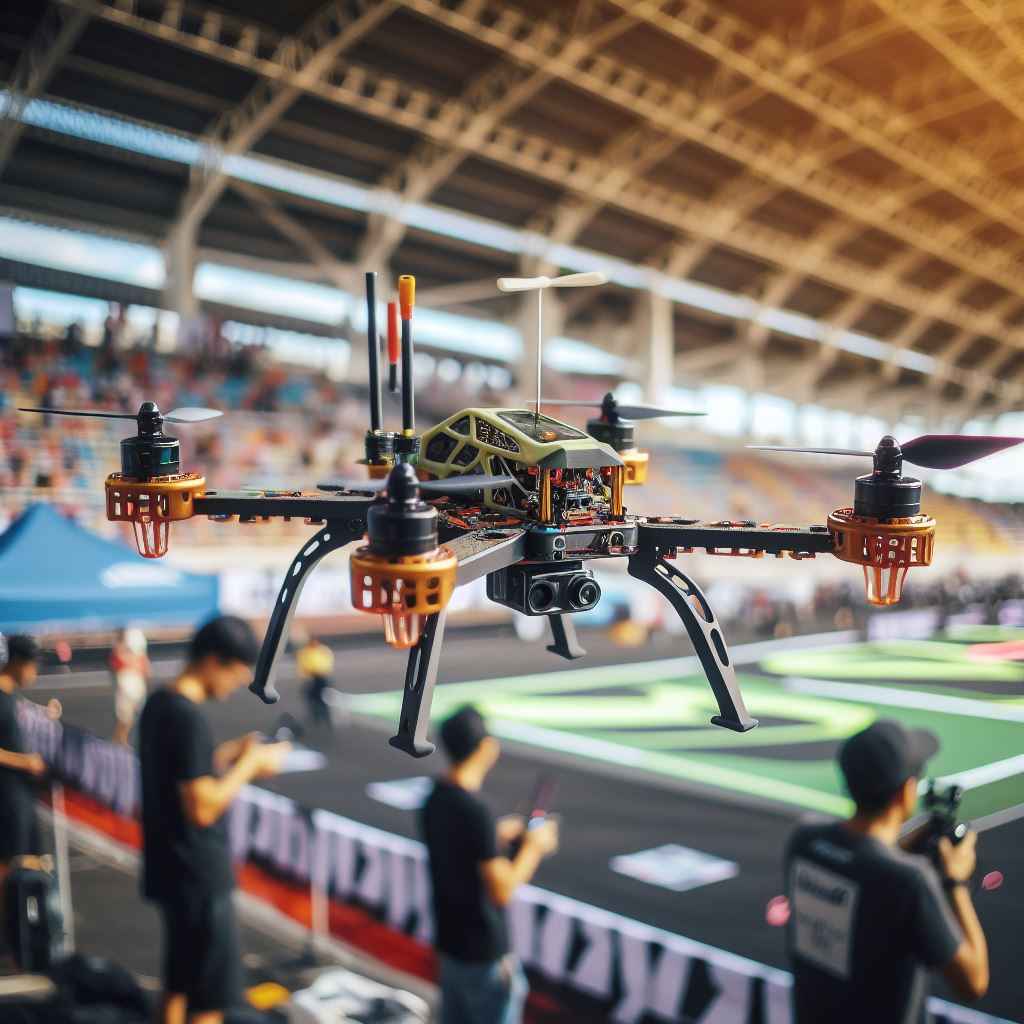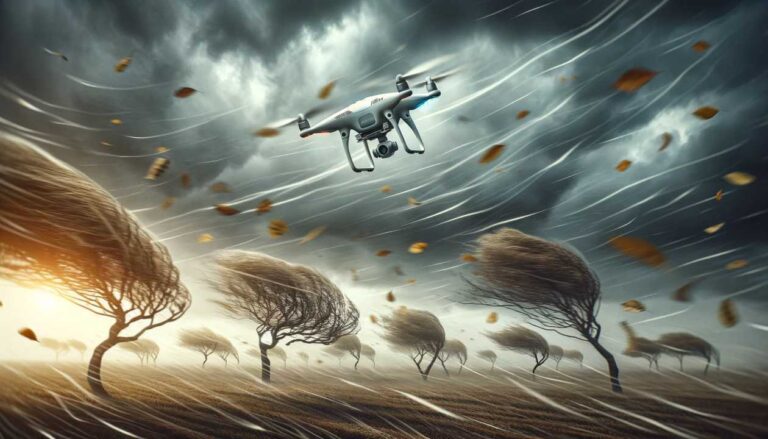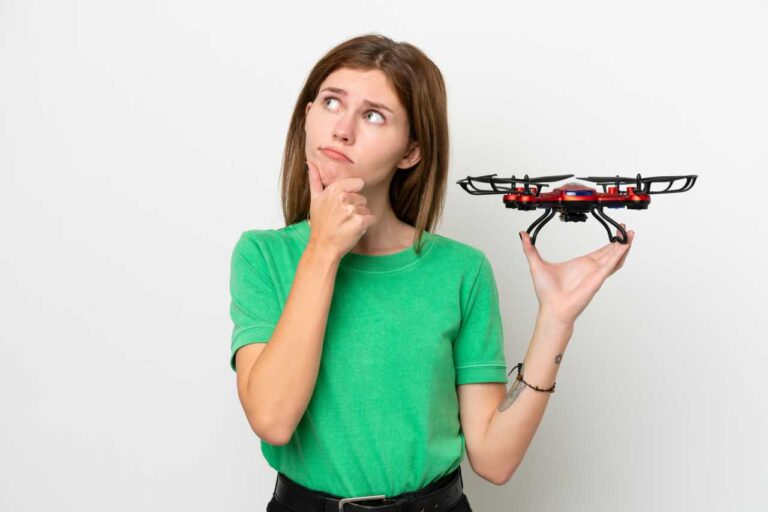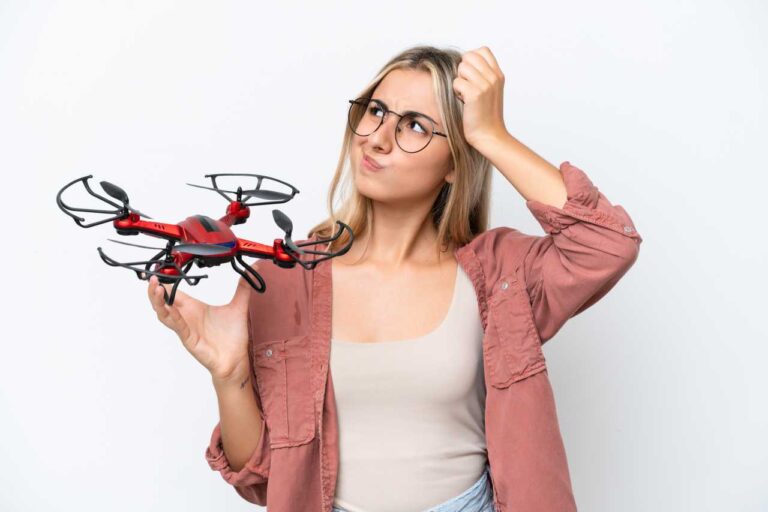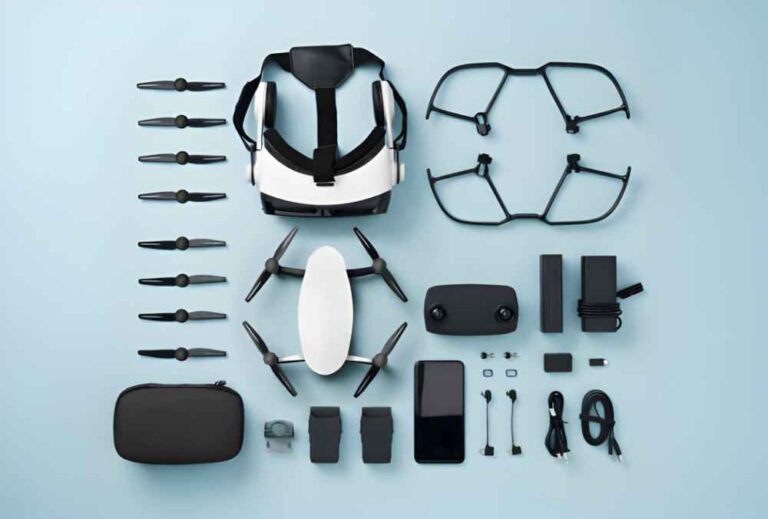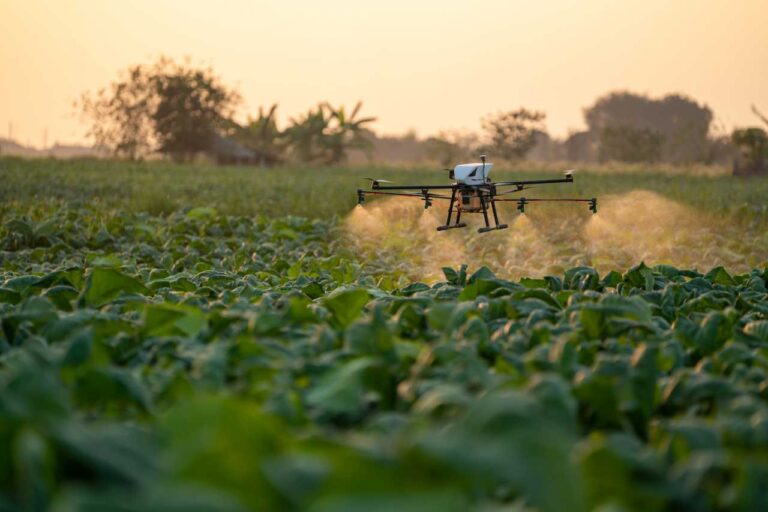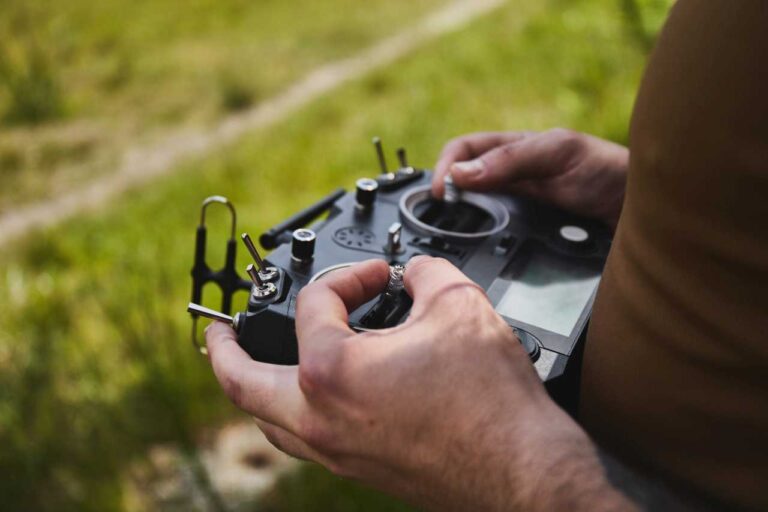Drones have become really popular and exciting, mixing cool tech with speed. If you’re thinking of getting one, knowing How Fast Can a Drone Fly could be really helpful.
Drones can go at different speeds depending on how they are made and what they are used for. For example, the quadcopters that most people buy can fly around at about 45 mph. Some of the fancier ones can go up to 70 mph.
Racing drones, which are made to be fast, often zoom past 100 mph. The very best ones can even hit a staggering 179 mph. On the other hand, military drones go at a steadier pace of around 135 mph. Beginner drones, made for kids, move at a gentle 12 mph.
The wide range of speeds shows how versatile drones can be, raising the question of How Far Can Drones Fly as well. This article will explore the thrilling world of drones, including what affects their speed, the fastest drones flying today, and a comparison of different drones to see how they stack up in speed and distance capabilities.
What’s the Fastest a Drone Can Fly?
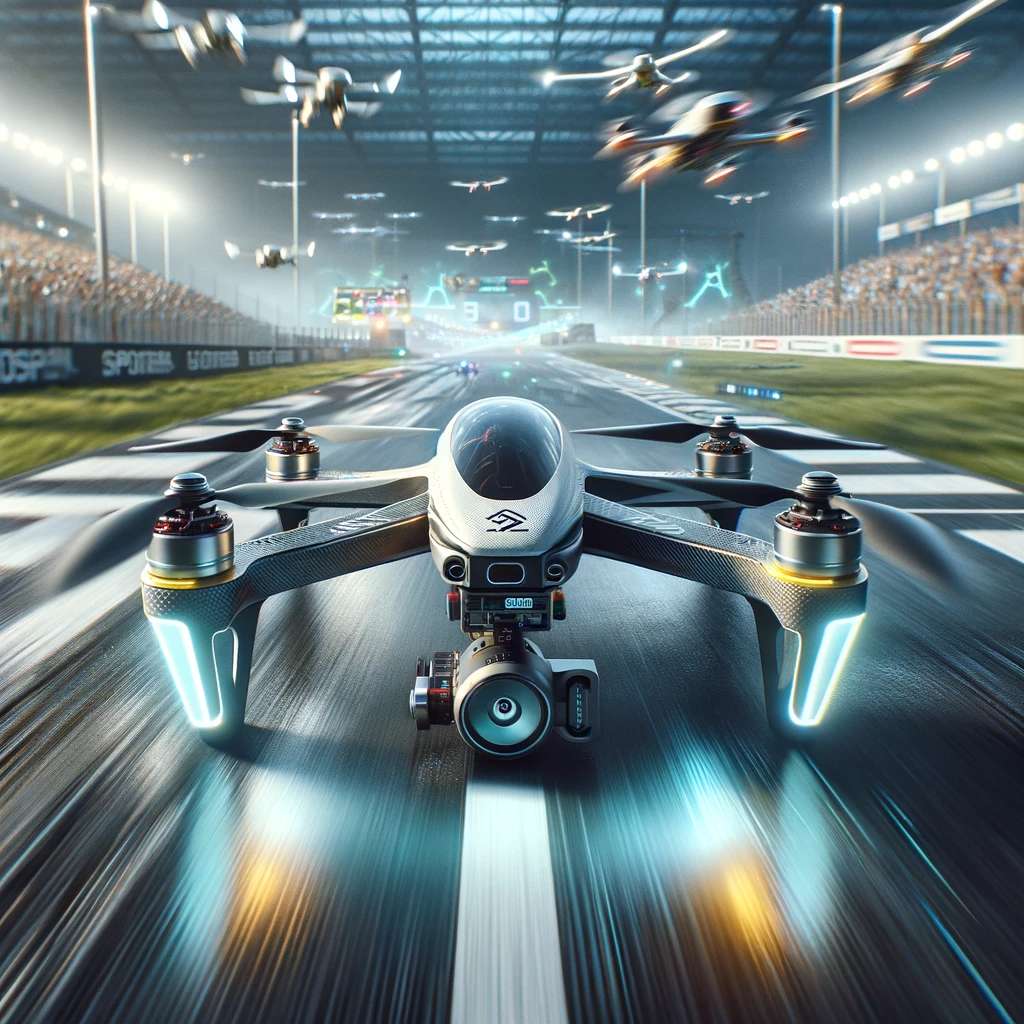
- The speed king among drones is the DRL RacerX from the Drone Racing League (DRL). It zoomed through the sky at a stunning 179 mph, earning a spot in the Guinness World Records.
- Military drones are on another level when it comes to speed:
- The RQ-4 tops the chart with a speed of 391 mph.
- The MQ-1 Predator and AAI RQ-7 follow, reaching 135 mph and 130 mph respectively.
- In the Drone Racing League, racing drones also show off their speed, but they’re not as fast as military drones.
These different speeds, central to understanding How Fast Can a Drone Fly, show how drones are designed for various tasks, whether it’s racing through the sky or aiding military missions.
How Do Commercial Drones Compare?
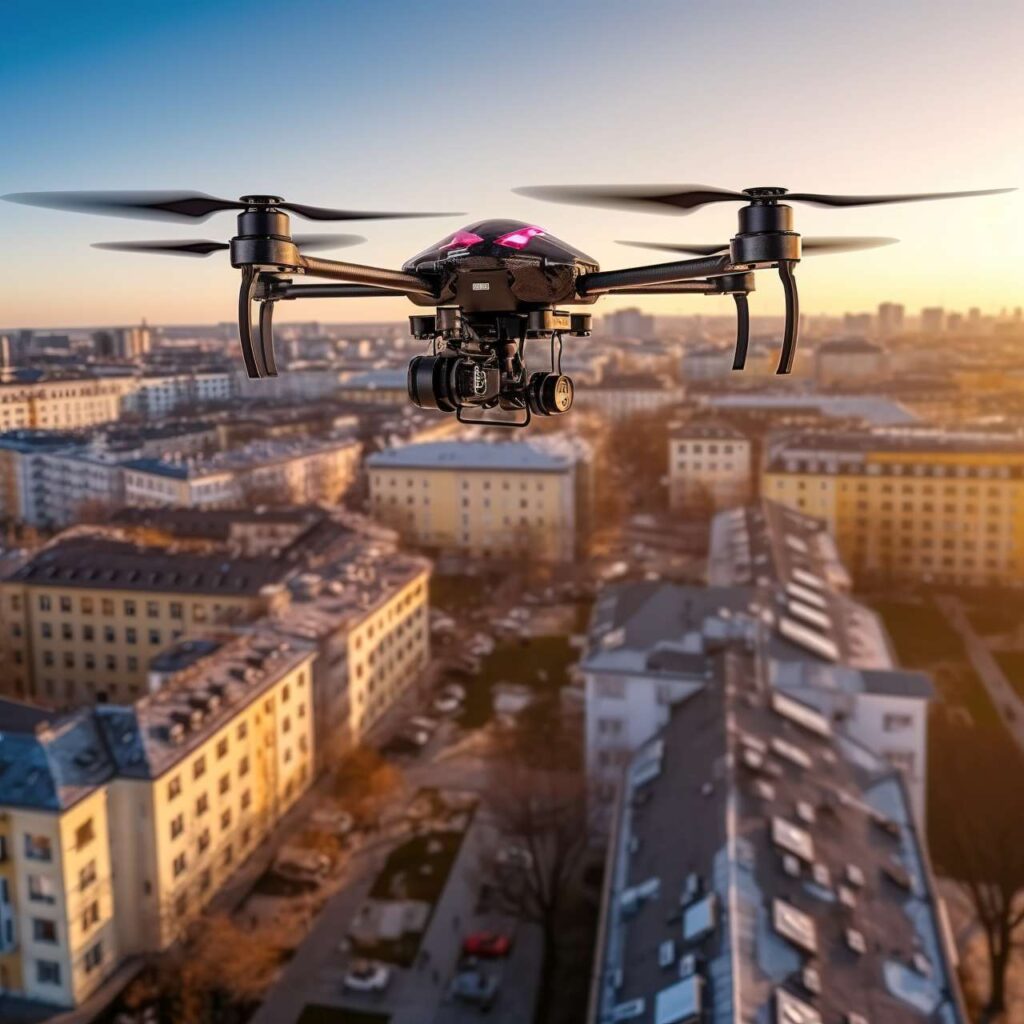
Commercial drones are used a lot these days. They help take cool aerial photos, help farmers, and even help find lost people. But how fast do they fly?
One famous brand known for making fast drones is DJI. Their DJI FPV drone is super fast, flying at 87 mph. But not all DJI drones are that fast. For example, the Mini 3 Pro and DJI Inspire 2 fly at 35 mph and 58 mph respectively.
Commercial drones are made for different jobs, and their speed shows that. Some drones are made for mapping lands and don’t need to be very fast.
A drone like the DJI Matrice 300 RTK is made for outdoor safety checks. It’s not just about speed with this drone. It also has a long range and can avoid obstacles well.
On the other hand, the DJI Mavic 3 is made for taking photos and videos from the sky. It may not be the fastest, but it stays in the air for a long time, capturing beautiful shots.
In the movie industry, professionals sometimes need fast drones to capture exciting scenes. These drones not only fly fast but also take high-quality videos.
The weight of a drone can affect its speed. Light drones are usually faster because they face less air resistance. But heavy drones with more features might be slower, yet they are more stable and can fly longer.
In simple terms, different commercial drones have different speeds. Like the speedy DJI FPV or the long-flying DJI Mavic 3, each drone is special in its own way. They are chosen based on what job they are needed for.
What Makes Drones Fly Faster?

Understanding how drones work is key to knowing how fast a drone can fly, as it involves looking at its parts and several other factors. Let’s delve into these details:
Drone Propellers:
- Propellers are important because they help the drone lift off. Bigger propellers push more air which helps in going faster.
Motor Power:
- The power of the motor affects speed a lot. It also changes how fast a drone can speed up and how much weight it can carry. Regular GPS drones have less motor power to keep them easy to control and to save battery. FPV drones have stronger motors but they can only fly for a short time because they use a lot of battery.
Drone Operating Voltage:
- The voltage of a drone changes its speed too. Drones with higher voltage and amperage have stronger motors, so they go faster.
Drone’s Weight:
- You might think lighter drones should be faster. But the drone’s size, shape, and how it faces air friction can change its speed. Both light and heavy drones could be slow depending on their motor power and design.
Drone’s Aerodynamics:
- Good aerodynamics, like in the DJI FPV, help a drone go faster and steadier by facing less air friction and wind resistance.
Drone Type:
- FPV drones are made for speed. Their speed is only held back by motor power, unlike regular drones which are made differently, often with software limits.
Internal Parts:
- Parts inside like the ESC or flight controller change how much power a drone can have, and so, how fast it can go. For instance, a 45A ESC in FPV drones lets more electric current go to the motors for more power and speed. But these parts could hold back power if they burn out when going full speed.
Weather Conditions:
- Weather can change a drone’s speed. Many drones can fly in bad weather, but they might not perform as well.
Altitude:
- Flying higher where the air pressure is lower can change how a drone performs. For example, the DJI Mini 3 Pro has a limit on how high it can go which is affected by its battery weight. This limits how well it performs at high places.
Each of these factors plays a crucial role in answering the question, how fast can a drone Fly. Additionally, when considering these elements, it’s equally important to ask can drones fly in wind. By examining these elements, you gain a better understanding of what contributes to a drone’s speed and its ability to handle different weather conditions.
How Do Different Types of Drones Vary in Speed?
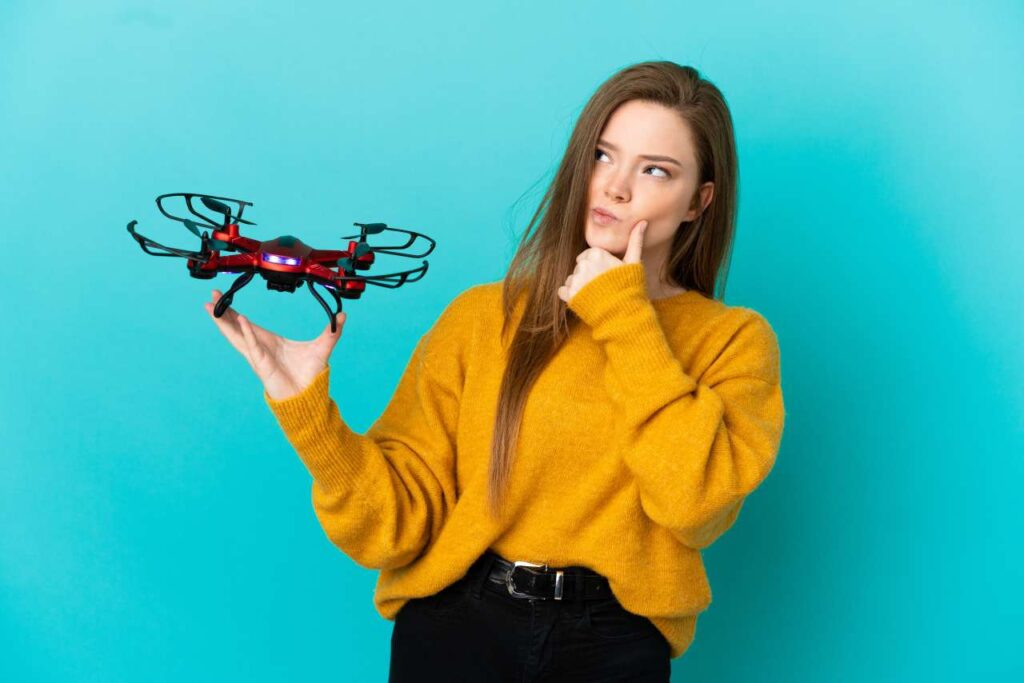
Drones can be fast or slow depending on their design and what they are used for. Let’s look at the speed of rotary-wing drones, fixed-wing drones, and compare consumer drones like the DJI Mavic Air 2 to professional drones.
Rotary-Wing Drones vs Fixed-Wing Drones Speed
Rotary-Wing Drones:
- These drones can stay in one place in the air. This is good for taking steady photos and videos. But, they are not as fast as fixed-wing drones.
- They have many propellers (usually four) that help them fly and steer. They move slowly and carefully, going up to about 45 miles per hour. Some fancier models can go a bit faster.
Fixed-Wing Drones:
- Fixed-wing drones have wings like airplanes. This lets them glide and go much faster.
- They can easily go over 100 miles per hour. Some can even fly as fast as 150 miles per hour or more. Their shape and power system help them go so fast.
Speed of Consumer Drones vs Professional Drones
Consumer Drones:
- A well-liked consumer drone, the DJI Mavic Air 2, goes up to 42.5 miles per hour. Drones like this are made to be easy to control, steady, and not too slow or too fast. They are great for many people.
- Most consumer drones go about 45 miles per hour. Though, some racing drones for consumers can go faster than 100 miles per hour.
Professional Drones:
- Professional drones often have stronger motors and can use more electric power. This lets them fly faster. For instance, the Yuneec Typhoon H can go up to 70 mph.
- The Phantom 4 Pro is another professional drone. It can go up to 36 miles per hour. It has strong motors and special features like avoiding obstacles. These features might keep it from going too fast, to keep it safe.
- A professional quadcopter called the XLR V3 broke a world speed record. It flew at 224 mph.
From these comparisons, we see how a drone’s design, its purpose, and its tech features can change its speed.
How Do Environmental Factors Affect Drone Speed?

Environmental factors change how fast a drone can fly. Let’s look at how wind, obstacle avoidance, and moving around obstacles affect drone speed:
Effects of Wind and Wind Resistance on Drone Speed:
- Wind can change a drone’s speed a lot. If the wind blows against the drone, it slows down. If the wind blows from behind, the drone speeds up. The shape of the drone also changes how wind affects it.
- Strong wind can make it hard to control the drone and keep the speed we want. Some drones have a feature to fight the wind and stay stable. But, this feature can also limit the drone’s speed to keep it safe.
Understanding How Obstacle Avoidance and Routing Around Obstacles Impact Speed:
- Obstacle avoidance helps drones see and avoid things in their way. This makes flights safer. But, it can slow down the drone as it checks for obstacles and decides how to avoid them.
- Moving around obstacles can also slow down the drone. This is seen in drone races where drones fly fast through obstacle courses. For example, some smart people at MIT made a special plan to help drones find the fastest way around obstacles without crashing. Drones using this plan were 20% faster in a simple obstacle course compared to drones using a normal plan.
- People are creating smart plans and doing real-world tests to help drones move fast while avoiding obstacles well. This work shows that drones could be used in urgent situations like finding people in disasters, where moving fast and avoiding obstacles is very important.
These points show how important it is to have smart flight plans. They also show the ongoing work in making drones better at balancing speed, safety, and efficiency.
The Thrill of High-Speed Drone Racing
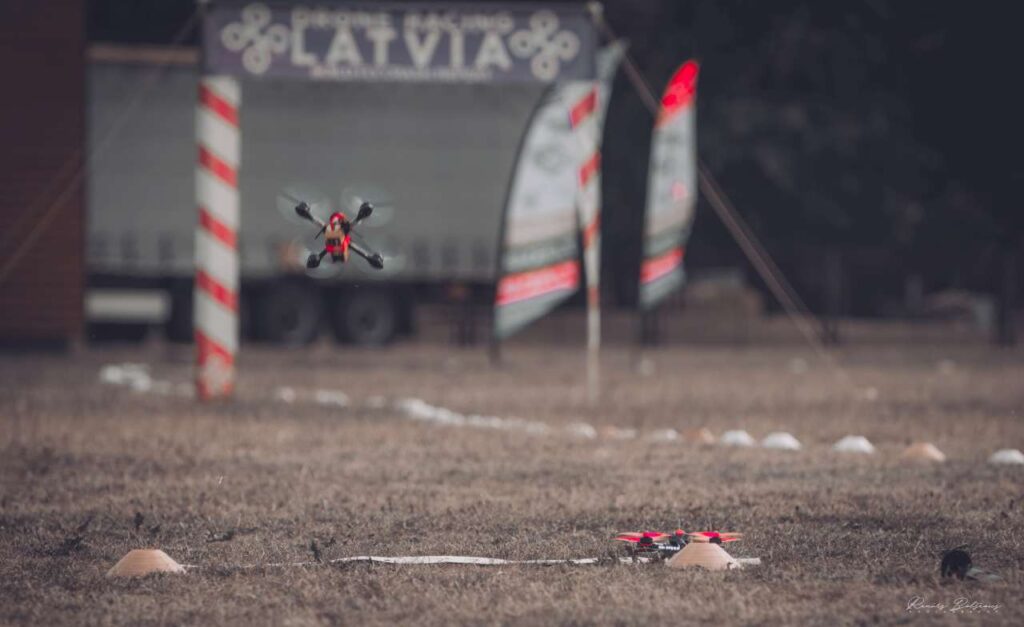
The world of high-speed drone racing is full of excitement. Racing drones are made for speed. They often go faster than 100 mph. Pilots need to react very fast to control them well. Many people love watching drone races. The Drone Racing League (DRL) is a big event. It has helped make drone racing a real sport. Pilots use special goggles to see from the drone’s view. This makes the races very thrilling.
Here are some cool facts and events in drone racing:
- A drone called the XLR V3 set a speed record. It flew at 224 mph in Scottsdale, Arizona.
- The DRL RacerX is another fast racing drone. It flew at 179.6 mph in 2022. This shows how drone racing keeps getting faster.
Drone racing is more than just flying drones fast. It’s a sport that needs skill and quick thinking. Pilots need to make fast decisions. They also need to know a lot about drones.
Drone racing is getting more popular. People love seeing drones fly at amazing speeds. Both pilots and fans find it very exciting. As drones get better, drone racing will keep growing. It’s a thrilling part of the drone world.
Choosing the Right Drone for Speed
When the need for speed kicks in, the drone market has a variety to offer. But it’s not just about the speed; balancing battery life and other features is equally important. Here’s a guided journey on how you could choose a drone that satisfies your speed cravings while not compromising on other essentials:
Balancing Speed, Battery Life, and Other Factors
- The allure of top speed can be quite enticing when selecting a drone. However, it’s a balancing act between speed, battery life, and other elements. For instance, the DJI Phantom 4 can sprint at a max speed of 45 mph in sport mode, but the faster it goes, the quicker it drains the battery.
- Flight speed varies with the type of drone you opt for. Rotary wing drones are your go-to for stable aerial shots but they trail in the speed race compared to fixed-wing drones.
- Your purpose also dictates your choice. If racing gets your adrenaline pumping, a high-speed drone is your pick. But for aerial photography, a drone with steady flight and longer airtime is more suitable.
Popular Drones Known for Their Speed
- Starting off with the fastest, the DJI FPV stands out with a whopping maximum speed of 87 mph. Tailored more for a thrilling flight experience than serious aerial photography, it offers three flight modes catering to novice FPV flyers. Reach its peak speed of 87 mph in manual mode. Available on the DJI website.
- For the race enthusiasts, the Rotor Riot CL1 is a worthy contender. With a top speed hovering around 70 mph, it’s crafted for the experienced pilots yearning to stretch the drone speed limit. Find it on the Rotor Riot website.
- The EMAX Hawk 5 races close with a top speed of about 60 mph. It’s another jewel for seasoned pilots, ready to be discovered on the EMAX website.
- Not far behind is the Holybro Kopis 2, boasting a top speed of around 60 mph. This high-performance racing drone is waiting for its pilot on the Holybro website.
Factors to Mull Over
- Besides the thrill of high speed, considering battery life, flight time, and durability is paramount.
- Aligning the drone’s capability with your skill level is crucial. Some drones cater to the veterans of the sky, while others are friendly companions to the novices.
- The electric motors, especially brushless motors, and the drone design significantly dictate the drone’s speed. A robust motor and a sleek design are the recipes for incredible speed.
Adhering to FAA Rules and Open Field Flying
- Abiding by FAA rules is a staple when indulging in high-speed drone flights. An open field is a safer bet to hit those higher numbers on the speedometer without brushing with the law.
In a nutshell, diving into the world of drones is an exhilarating experience. The fastest drone speed may beckon, but weighing in other factors like battery life, durability, and your skill level ensures a well-rounded drone flying adventure.
The Future of High-Speed Drones
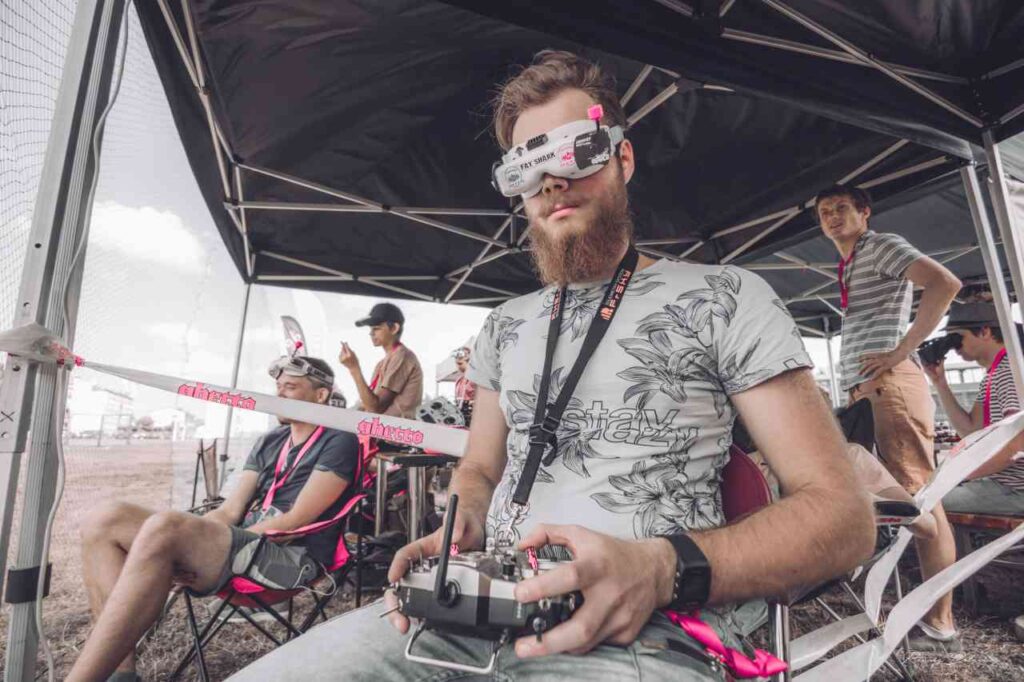
Upcoming Drone Technology for Faster Speeds
The quest for faster drones is always on. Here are some ways technology is helping drones fly faster:
- Powerful Motors: Better motors mean drones can fly faster. The race for speed in the drone community is pushing technology forward, with drone pilots constantly seeking more powerful motors.
- Better Shape: A good shape lets drones cut through the air, making them speedier.
- Light Stuff: Using light materials makes drones faster, allowing them to glide smoothly in the air.
- Powerful Battery: A strong battery helps drones fly at top speed for longer. More powerful battery technology is being developed to keep up with the high demands of speedy drones.
- Better Push: New propulsion methods are being explored to push drones forward for more speed.
Drones are also getting smarter. They can decide how to use their power to fly fast, thanks to the Electronic Speed Controller (ESC). This part talks to the remote controller and tells the drone how fast to go.
Benefits of Speedy Drones
Fast drones are not just for racing. They can do a lot of good work too:
- Help Fast: In an emergency, speedy drones can bring medicine or take pictures to help rescue teams.
- Look Quick: Drones can take a quick look at buildings, bridges, or power lines to make sure they are okay.
- Fast Delivery: Drones can bring things to people very quickly, making life easier.
- Quick Look: In big fields, drones can take a quick look to help farmers.
- Safe Watch: Drones can keep a watch to keep places safe. They can take a quick look at a large area, ensuring everything is in order.
What’s Coming Next?
There are small drones called micro drones that go really fast. They are helping to find new drone pilots. Some people see them race and decide to learn to fly drones too, which could even help in Air Force recruitment.
Companies that make drones are always trying to make them better. A drone manufacturer might put a high-speed camera drone on a drone. This lets the drone take clear pictures even when it is going very fast.
There’s also a sports mode on some drones. This lets them fly at their maximum range of speed. It’s a fun way for people to see just how fast their drone can go.
The world of drones is getting more exciting with all these changes. Faster drones can do their jobs better and also bring new people into the world of drones. The Federal Aviation Administration (FAA) rules might affect drone speeds, but the drone technology is advancing rapidly to explore the highest speed possible within the legal framework.
FAQs
How fast are drones usually?
Drones come in many types. Each type has its own speed. Common drones, like the ones used for pictures from the sky, fly at about 15 to 50 mph. But some drones are really fast. They are used in drone racing competitions and can go over 100 mph. People who love drones look for a good mix. They want speed, but also a drone that stays steady and has good battery life. This is important for tasks like drone surveillance or just flying for fun.
What is the fastest drone you can buy?
The fastest drones are made for racing or special jobs. Drone racing competition models are very fast. Some can go up to or over 100 mph. The DJI FPV is one of the fastest you can buy. It can go up to 87 mph when set to sports mode. If you want to buy a fast drone, check the details from the maker or seller.
How fast can drones go in sports mode?
Sports mode makes a drone go really fast. For example, the DJI FPV can hit 87 mph in this mode. This is much faster than its usual speed. People who love drones really like sports mode. It makes flying more exciting. But, it needs skill to control a lightweight drone at this speed.
How does the drone type affect its speed?
The design of a drone affects its speed a lot. Fixed-wing aircraft are usually faster than drones with rotating propellers. They are shaped like airplanes and glide through the air. They can easily go over 100 mph. But rotary-wing drones, or quadcopters, are different. They are known for staying steady and hovering but are slower, going about 45 to 50 mph at most. Racing drones are built for speed. They go really fast but might not fly for a long time on one battery charge.
Some advanced drones take design ideas from both fixed and rotary-wing drones. They try to balance speed with other good flight features. They might also have power efficient motors to go fast but still have okay battery life.
Summary
We talked about drones in this article. We saw how different types of drones have different speeds. Commercial drones, military drones, and racing drones all fly at different speeds.
The type of drone and its design affect its speed. Rotary-wing drones and fixed-wing drones work differently. So, they fly at different flight speeds.
People who like drones enjoy the speed. Faster drones can race in drone racing competitions. The Drone Racing League is one place where they race. Fast drones can also help in many ways. They can deliver things quickly, help in emergencies, and check places fast.
The motor and battery life help the drone to go fast. Powerful motors and powerful batteries make drones fly faster. Some drones have a sports mode. This mode lets them fly as fast as they can.
The future of high-speed drones is bright. Micro drones are getting very fast. They make more people want to fly drones. Companies making drones are trying new things. They are putting high-speed cameras on drones. They are making motor power better.
Drones with sports mode are fun. They let people see how fast their drone can go. The range of what drones can do is growing. New things like electric motors, Electronic Speed Controllers (ESC), and better flight controllers are coming. These things are making drones faster and better.
In short, drones can do a lot because they can fly fast. Whether it’s for work, racing, or fun, speed is exciting. As we get new technology, the average drone speed will go up. This will make flying drones even more exciting.

